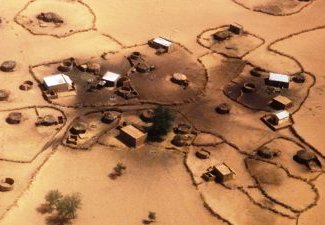
One out of ten people on Earth is likely to live in a climate impact hotspot by the end of this century, if greenhouse gas emissions continue unabated. Many more are put at risk in a worst-case scenario of the combined impacts on crop yields, water availability, ecosystems, and health, according to a study now published online by the Proceedings of the National Academy of Sciences (PNAS).
It identifies the Amazon region, the Mediterranean and East Africa as regions that might experience severe change in multiple sectors. The article is part of the outcome of the Intersectoral Impact Model Intercomparison Project (ISI-MIP) that will be featured in a special issue of PNAS later this year.
“Overlapping impacts of climate change in different sectors have the potential to interact and thus multiply pressure on the livelihoods of people in the affected regions,” says lead-author Franziska Piontek of the Potsdam Institute for Climate Impact Research (PIK). “This is why we focus on multisectoral impacts around the world, which turn out to be felt in developed as well as developing countries.”
“What Today is Considered Extreme Could Become the New Normal”
The study is the first to identify hotspots across these sectors while being based on a comprehensive set of computer simulations both for climate change and for the impacts it is causing. Modelling groups from all over the world collaborated under the roof of the ISI-MIP project to generate consistent data. This is an unprecedented community effort of climate impact researchers worldwide to elucidate the risks that humankind is running. It aims at laying a new foundation for future analyses of the consequences of global warming.
“Now we looked for instance into the water availability during the last thirty years,” says co-author Qiuhong Tang of the Chinese Academy of Sciences. “We took as the threshold the water availability only undercut by the three driest years. When the average water availability in our projections under global warming sinks below this threshold, we call this severe. So what today is considered extreme could become the new normal.” This is the case in the Mediterranean.
An Increase of Both the Robustness and the Spread of Results
The combination of multiple different impact and climate models increases – even though this at first glance seems to be a contradiction in terms – both the robustness and the spread of results. “We get a broader range in projections of future crop yields, for example, when we recognize assumptions in both the climate and the impact model processes. However, locations with strong agreement among model approaches are more reliable hotspots than those identified by a projection based on just one model with all its underlying assumptions,” says co-author Alex Ruane of the NASA Goddard Institute for Space Studies. “It allows for a risk management perspective – in the hotspot parts of Africa, for instance, even small temperature rises can lead to additional losses that many small farmers simply cannot afford.”
The study, titled “Multisectoral Climate Impacts in a Warming World”, takes a conservative approach with regard to model agreement. To make allowance for the large spread of results, the scientists also computed a worst case-scenario, based on the most worrying 10 percent of computer runs. This assessment shows a large additional extent of multisectoral climate impacts overlap, with almost all the world’s inhabitated areas affected.
Paper Reference:
Piontek, F., Müller, C., Pugh, T.A.M, et al. (2013): Multisectoral Climate Impacts in a Warming World. Proceedings of the National Academy of Sciences (early online edition) [DOI:10.1073/pnas.1222471110]
Source: PIK.

















